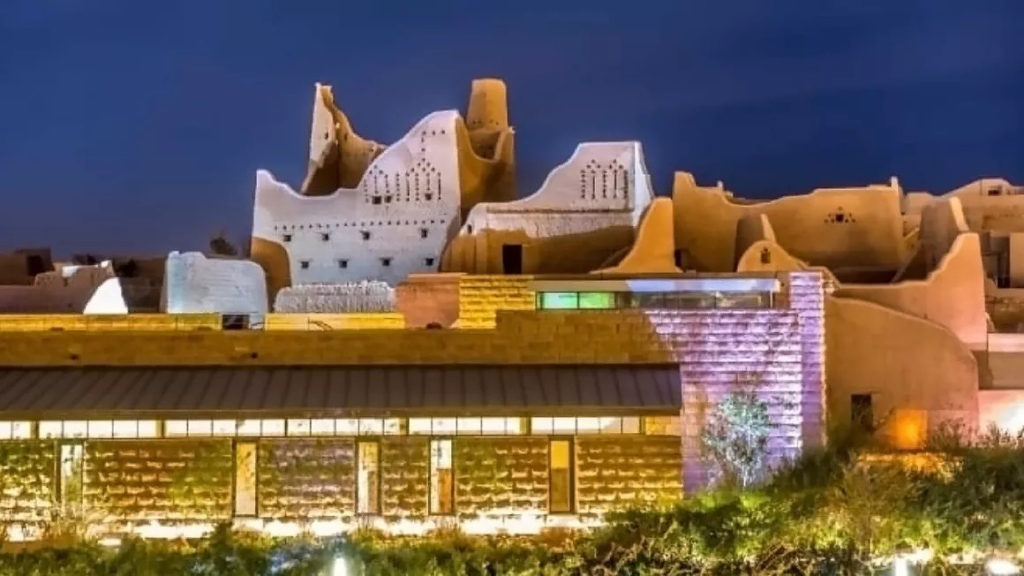Riyadh’s blend of medieval and millennial makes for a beguiling cultural union — one where Arabia’s first roots can be traced, and where its bold future can be envisioned. The city’s fascinating, centuries-old history can be found within its atmospheric souqs, compelling museums, and ancient architecture, but it’s also a modern metropolis, with glittering high-rises and a burgeoning contemporary art scene. The winter months are an ideal time to visit Riyadh. Although average high temperatures in the summer can reach 44 degrees C, the top temps in December and January are in the low 20s.
Diriyah

Considered by many to be the “pearl of Saudi Arabia,” Diriyah is becoming a major tourist destination. One of Saudi’s signature projects, developed to encourage tourism to the area, Diriyah will eventually encompass luxury resorts (the first of which is set to open in late 2021), numerous international hotel brands, as well as dining, shopping and entertainment options. But don’t let the modern glitz and glam distract you from Diriyah’s deep cultural roots. Diriyah’s history goes back thousands of years: It was once an ancient trade and pilgrimage route, and a meeting spot for people traveling to or from Asia, Africa or Europe.
Wadi Hanifa

Historically known as Wadi al-Arad,[1] is a wadi (valley) in the Najd region, Riyadh Province, in central Saudi Arabia. The valley runs for a length of 120 km (75 mi) from northwest to southeast, cutting through the city of Riyadh, the capital of Saudi Arabia. A string of towns and villages lie along the valley, including Uyaynah, Irqah and Diriyah. The historical city of Riyadh itself is on the northeastern side of the wadi, but the city has now expanded across Wadi Hanifa, with the sub-municipalities of Al-Shifa and Al-Urayja on its southwestern side.
Edge of the World

The Edge of the World (its real name is Jebel Fihrayn), one of Saudi’s most popular tourist destinations, got its nickname from the uninterrupted view of the horizon it offers atop its 300-meter-high cliffs, which overlook the surrounding plain. It’s part of the much longer Tuwaiq escarpment, and drops down roughly 305 meters into an ancient ocean bed. From the top of the cliffs, you’ll spot dried rivers weaving across the land and may even see camels moving far below — an ancient caravan route once passed through these grounds.




